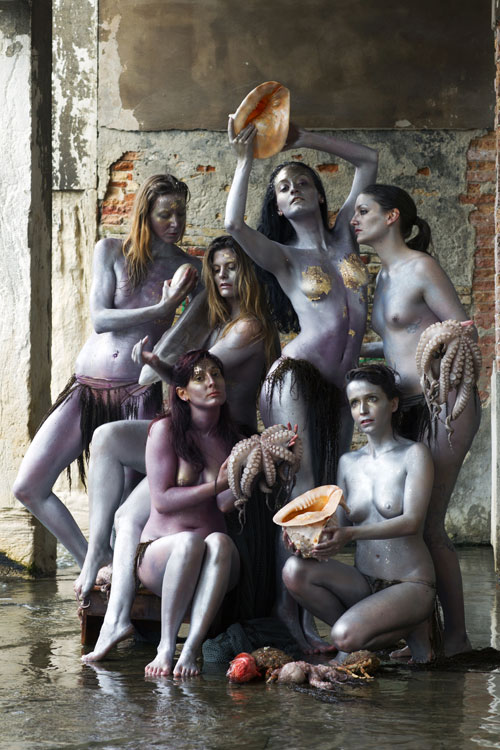Germany
IRIS BROSCH
Discreet details Women and nature near extinction – an overture by Iris Brosch
At first glance, the term tableaux vivants in which the photographs by Iris Brosch are framed inevitably exhales the flavour of old paintings into which our cultural history is so safely engraved. But looking closer, we have to admit that, even in the current media-jungle, we find ourselves surrounded by living tableaux emerging on all possible platforms.
These tableaux vivants are for Iris Brosch the “hot zone” of contemporary communication. In her photographs what interests me most are the conflicts inherent in body images and gender roles. With her living tableaux and performances in the installation Women and nature near extinction Iris Brosch successfully brings back to life fey ciphers and constellations of history and society that, for ages, were frozen.
In Women and nature near extinction Iris Brosch approaches her beauties and assumed beauties so closely that sometimes barely a piece of skin remains visible. Her photographs approach thus the fragility of illusion and shallowness of classical composition. Throughout her works, Brosch looks for the explosive moment. Her works are no light fare, they are controversial and invite the spectator to actively take a position, to think and reason further, not-withstanding feminism, violence, war and morality.
This journey demonstrates that in our 21st century a critical perception of nature and art cannot easily be distinguished. Brosch’s video and photographic works create an alliance of art and ecology; the latter being widely regarded as the most significant science of our time. By means of specific lines of sight Brosch’s artistic work epitomizes the unity of femininity and nature and identifies that our relation to nature has turned troublesome. In the post-romantic age sometimes both nature and femininity appear as severely threatened and it is thanks to projects like Women and nature near extinction that our eyes are opened and minds challenged to reconsider and reprove.
text by Manon Bursian
